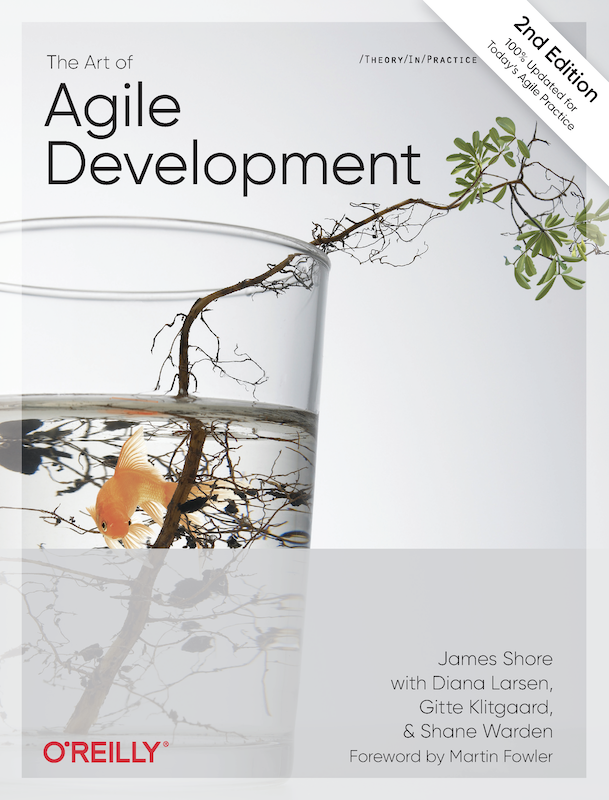A couple of months ago I reviewed The Agile Pocket Guide in hopes that it would provide a good executive-level introduction to Agile development. At the time, I said that I was disappointed that the book wasn’t designed to serve that purpose. So, I decided to pick back up The Art of Agile Development, a book I had previously bought and referenced at times in my consulting work.
The Art of Agile Development by James Shore is NOT a “pocket guide”. It is a hefty 500 pages of rich content, broken into four parts structured around the Agile Fluency Model. In the Preface the author explains that the book is designed to be used both as a reference book as well as to read cover-to-cover. He spends 6 paragraphs explaining how different audiences should approach the book. He suggests that managers and executives who want “to understand how Agile can or should work in your company” read Part I. Since that’s my audience, the review linked below focuses on Part I and the first couple of chapters in Part II to give a sense for the rest of the content in the book.
Part I is titled “Improving Agility” and provides an introduction into how to get started with Agile development. The other three sections of the book are organized around the Agile Fluency Model, which identifies four “zones” of agile maturity. The Focusing Zone is all about the fundamentals of establishing the team dynamics and values behind Agile. The Delivering Zone is focused on technical excellence and designing code to respond to frequent changes. The Optimizing Zone is about being highly responsive to changing market conditions and being able to outmaneuver the competition. The author describes the Strengthening Zone as “largely speculative: a possible future for Agile.” Part II of the book is about the Focusing Zone. Part III is about the Delivering Zone. Part IV is about the Optimizing Zone. The final chapter, titled “Into the Future” touches on the Strengthening Zone.
Overall, The Art of Agile Development is a detailed guide to implementing Agile in an organization. Those charged with doing so will benefit greatly from the experience, perspectives and resources the author brings to guiding them through the journey. Others in the organization will benefit from the strong introduction to Agile in Part I, and the availability of Parts II-IV as a future reference as they become increasingly exposed to the concepts and practices that make Agile special.
Part I answers most of the questions an executive new to Agile will have.
If that’s you, click here for my detailed review and summary of that part of the book.

